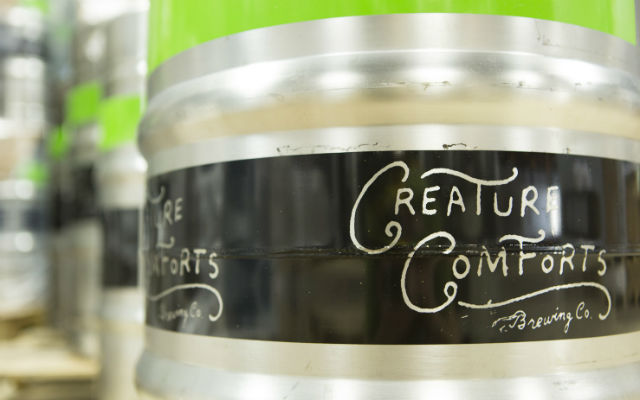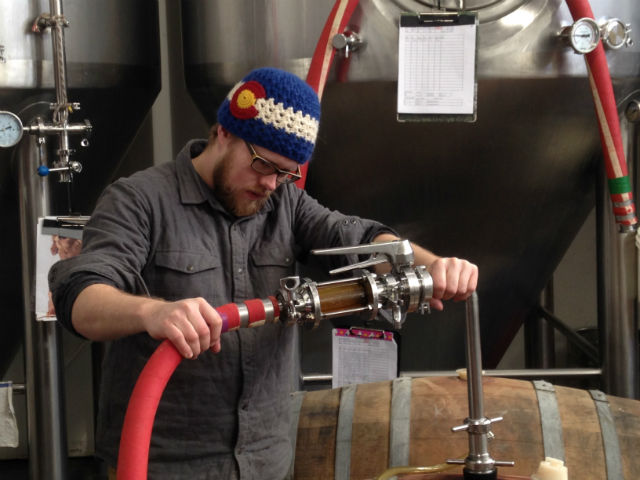
Being able to have some internal insights into the ins and outs of the craft beer distribution industry has seemingly helped Julien Lux over the past 10 years. Of course, the craft beer industry as a whole is much different than it was in the early 2010s, but it helped the founder of Sacramento’s New Glory Craft Brewery jump into the market a decade ago this year with some foundational knowledge.
Looking back — as with any owner — hindsight is 20/20 and looking forward now in the industry Lux feels that entering into a distribution agreement may not always be a choice that needs to be handled right away. Especially post-pandemic.
“I mean, it worked out, but we never had the chance to build the self-distribution side,” he told Brewer earlier this year. “I think, looking back, it can be pretty important for a small brewery. Especially right now.”
Being able to sell your beer across the bar top and learn what can be a hit or a miss with the local craft beer nerd and all the way over to “Gen Pop” — as Lux calls casual consumers — can be an important stepping stone in the growth of the craft brewery. Celebrating 10 years open as a company this past June, New Glory has evolved and matured in core brands and a look that helps build growth.
Born in France, Lux was big into his native styles and wanted to share that with the Sacramento crowd. Starting with taps and kegs of a Red Ale, Saison, Porter, and California Common, New Glory launched in 2013. Missing from that opening portfolio? An IPA.
Lux went into industry and having sold lots of Sierra Nevada and Firestone Walker during his six years as a wholesaler rep, he figured as he moved from homebrewing to opening his own brewery he wanted to do two things to build his company.
“When we first opened, I would say that I would never make an IPA,” he said with a hearty laugh along with Director of Brewing Operations, Jack Brian. “Yeah. I was one of those guys. Everybody else was making IPAs. If we’re not the first or we can’t be the best, why try to compete?
“That’s always been our motto here. You either need to be the first or we need to be the best. So at first, we didn’t have an IPA. The Red Ale was like my compromise. But that quickly changed, within the first 6-8 months. People, that’s what they were asking for.”
The core now for New Glory centers on those “Gen Pop” buyers — a term Lux used during the interview with Brewer in March of 2023 — with Gummy Worms, a Hazy Pale Ale, taking up about 60% of the brewery’s 12,000 barrels of production at the end of 2022.
That’s followed by its West Coast IPA, Ubahdank, and Citra Dream, a Hazy IPA.
“Every Monday we’re brewing (Gummy Worms),” Brian said, pointing outside the office window to the 40-barrel system the brewery recently bumped up to along with an expansive tank farm that could allow the brewery to grow to 55,000 barrels in the space they have.
“As it is, right now, we could get close to like 18-19,000,” Lux said, “but we probably would need a faster canning machine at that point.”
At first, Lux said they wanted to just be a small brewery in Sacramento.
“Then, our eyes got big and business was doing well,” he said, pointing out that people would line up for can releases when they were on a 15-barrel system and still mashing in by hand. “The second idea after that was maybe we can be a regional brewery. But then the idea hasn’t gone further than that at this point in time.
“If I can make 30,000 barrels of beer and sell it all in the Sacramento region, then I’ll do that.”
Hovering in that 10,000 barrel range may be a sweet spot for the area that New Glory covers and Lux is happy with doing less out into the market and finding consumers who want to come into the taproom to find smaller batches of specialty beer while just making slight sales tweaks for distribution into wholesale accounts.
“We’re gonna let fewer cans leave the building and try to reserve those our taproom and try to rebuild the draft back up to how it was, but putting all the focus on our core brands, and building that branding and that household name,” Lux said, saying the big push for 2023 was introducing fans to 12-ounce 12 packs along with 16-ounce four-packs.
“The idea there is well, the four-pack is kind of like your sample size, essentially,” he said. “Someone that’s never had it, or wants to try it. It’s probably easier to spend 14 bucks for a four-pack than just buy a 12-pack.
“The 12 packs are for that drinker that’s been with us for a long time that’s accustomed to our beers and coming on a regular basis, then they can start buying that bigger format, where they can get better value and they help give more volume for us.”






1 Trackback / Pingback